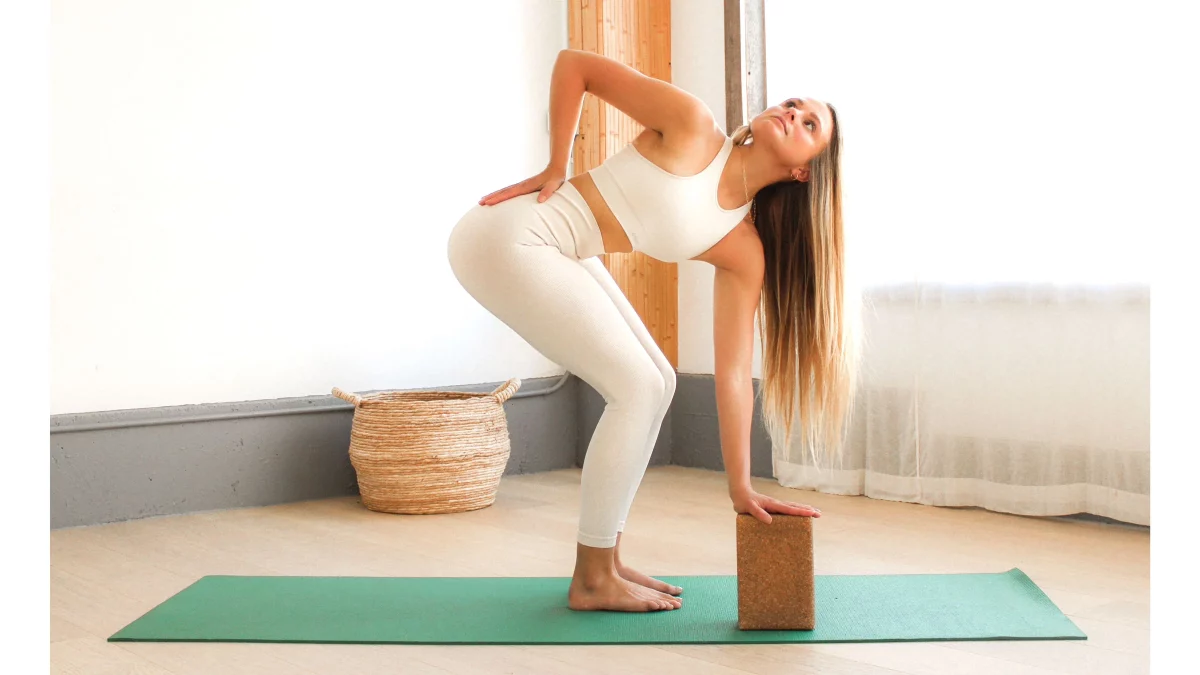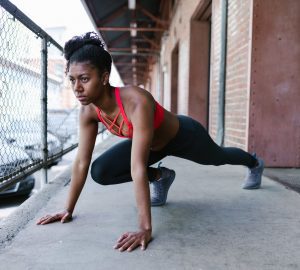Practicing yoga is an excellent way to improve your physical and mental well-being, but it’s essential to do it safely to prevent common yoga injuries. Yoga involves various postures that require stretching, strengthening, and balancing the body. While these postures can be challenging, listening to your body and not pushing yourself too hard is crucial.
A sustainable yoga practice means practicing at your own pace and not comparing yourself to others. Beginners should always start with basic poses and gradually progress to more advanced ones. It’s also essential to follow the guidance of an experienced instructor and use props to support your body when needed. By practicing yoga safely, you’ll not only prevent injuries but also enjoy a sustainable practice that will benefit your body and mind in the long run.
How common can yoga injuries occur?
Common yoga injuries include repetitive strain and overstretching of the neck, shoulders, spine, legs, and knees. These common injuries can occur due to various reasons, like improper alignment, which puts unnecessary strain on joints, muscles, and ligaments. Another one is overexertion, where practitioners push themselves beyond their limits and into pain or discomfort. Lastly, holding poses for too long and not modifying poses.
Tips for a safe yoga practice
Start Slow:
To fully experience yoga’s physical and mental advantages, it is crucial to start the practice slowly. This approach allows for a more profound connection between your breath, body, and mind while reducing the risk of injury. Beginning with gentle warm-ups and easing into poses can help prevent muscle strain. It is essential to focus on what is comfortable for your body and not to compare yourself to others.
Starting slowly can also establish a solid foundation that enables you to master the basics, including proper alignment and form. This, in turn, improves your physical abilities and prevents injuries. Moreover, a gradual start can help you sustain your practice and enjoy it in the long run, translating into better commitment and overall benefits from yoga.
Proper alignment
Engaging in yoga involves assuming different positions and stretching muscles that may not have been stretched. Being mindful of your body’s response to each posture is crucial, and it’s a must to observe proper alignment in each pose. Each yoga pose has specific alignment cues that are important to follow to maximize its benefits and prevent injury. It’s always a good idea to take a few classes with a qualified yoga teacher to learn proper alignment and technique for each pose.
Modify Poses
It is crucial to modify yoga poses for various reasons. Firstly, every person’s body is different, and modifications are necessary for beginners or those with physical limitations. Secondly, incorrectly performing poses can have negative consequences. For instance, individuals with tight hamstrings should use props or bend their knees while doing forward folds to prevent straining their lower back. Lastly, modifying poses and gradually increasing their difficulty can help develop strength and flexibility safely. It is vital to pay attention to the body’s signals and avoid overexertion to prevent injuries and gain maximum benefits from yoga.

Use Props
The use of props in yoga, such as blocks and straps, can help with alignment and provide support during challenging poses. However, props should be used to help deepen your practice, not as an aid. You can take your yoga practice to the next level with the proper use of props and commitment to proper alignment.
Avoid Overexertion
When practicing yoga, it’s important to remember that it’s not a competition. It’s not about how far you can push yourself or how long you can hold a pose. Yoga is a holistic practice that involves the mind, body, and spirit. Overexertion in yoga can be counterproductive and even harmful to your body. One of the main reasons to avoid overexertion in yoga is to prevent injury. Yoga poses should be approached with caution and mindfulness. Pushing yourself too hard can lead to muscle strains, sprains, or even more serious injuries. It’s important to listen to your body and respect its limitations. If a pose feels uncomfortable or painful, back off and modify the pose or take a break. Taking breaks is also important for drinking water and relaxing your muscles.
Techniques to prevent common yoga injuries.
Wrist Injuries
Warm up your wrists before you begin your yoga practice. You can do this by gently rotating your wrists in circles, flexing and extending your fingers, and doing simple stretches. This will help to increase blood flow to your wrists and prepare them for the poses ahead.
When you’re in a plank, downward dog, or handstand, it’s crucial to distribute your weight evenly across your hands. Make sure that your fingers are spread wide apart and that you’re pressing down firmly through your fingertips and the base of your palms. This will help to take some of the pressure off your wrists and distribute it more evenly throughout your hands.
Shoulder injuries
Shoulder injuries are a common problem for people practicing yoga, especially in poses such as chaturanga and upward dog, and shoulder stand. These poses require a lot of strength and stability from the shoulder joint, and if not done correctly, can lead to shoulder pain and even injury.
It is crucial to gradually build strength in the shoulders by starting with easier poses such as plank and progressively moving towards more challenging poses like Chaturanga and upward dog. This approach helps to develop the necessary stability and strength in the shoulders, which is crucial for performing these poses safely.
Additionally, engaging the core muscles is important for creating a stable base that distributes weight evenly throughout the body. It ensures that the weight is distributed evenly throughout the body. Keeping elbows close to the body while lowering down into Chaturanga is advisable to avoid shoulder strain and reduce the risk of injury.
Similarly, while doing an upward dog, keeping shoulders away from the ears helps to prevent unnecessary tension in the neck and shoulders. Using props such as blocks or straps can also help modify these poses to make them more accessible and reduce the risk of injury.

Knee Injuries
Knee injuries are, unfortunately, quite common in yoga practice. They can be caused by a variety of factors, including improper alignment, overuse, or a lack of strength and flexibility in the surrounding muscles.
It’s essential to pay close attention to your alignment during each pose. This means ensuring your knees are tracking over your toes and not collapsing inward or outward. Additionally, be sure to engage your core and activate the muscles of your legs and glutes to provide stability and support for your knees. You can also modify the poses according to your limitations and use props like blocks or blankets to support your knees or skip certain poses altogether.
Hamstring Injuries
Yoga practitioners often experience hamstring injuries, particularly when performing forward folds and seated forward bends. These poses require a lot of hamstring flexibility and can strain these muscles if done incorrectly.
To prevent this, focusing on your alignment and hinge at the hip joint instead of rounding your back is important. If you struggle with maintaining proper alignment, consider using props like blocks or straps for support. Additionally, it’s crucial to avoid overstretching your hamstrings and to listen to your body’s limitations. Progress takes time, and it’s better to be cautious and avoid injury rather than pushing yourself too hard too quickly.
Lower Back Injuries
Lower back injuries are unfortunately quite common in yoga, especially when it comes to poses that involve backbends and twists. One technique to help prevent lower back injuries is engaging your core muscles throughout the pose. This means actively pulling your belly button towards your spine, stabilizing your pelvis, and protecting your lower back. Another technique is to use props, such as blocks or straps, to support your body in the pose and prevent over-stretching.
Conclusion
Practicing Yoga can be a wonderful way to improve physical and mental well-being, but it’s important to keep safety in mind. Just like other physical activities, there are risks involved if proper precautions are not taken. However, with some preparation and attention, yoga can be a safe and enjoyable practice for people of all ages and fitness levels.
Remember that everyone’s body is different and has its own limitations, so it’s important to listen to your body and respect your own physical boundaries. This means not pushing yourself too hard, especially when starting out. The key to practicing yoga safely is to approach your practice with a sense of mindfulness and respect for your body. By doing so, you can enjoy all the benefits that yoga offers, both physically and mentally, while minimizing the risk of injury or other negative side effects.
Author Bio
Rick Kaselj is a highly respected health and fitness expert with over two decades of experience. He founded ExercisesforInjuries.com, OliviaDiet.com, Gentlestretching.net, Lifelongwellness.org, and HealthNewsDay.com, where he provides valuable resources on fitness, injury prevention, and healthy eating.
Social:
FB – https://www.facebook.com/oliviadietcom
YT- https://www.youtube.com/exercisesforinjuries
Twitter – https://twitter.com/OliviaDiet








